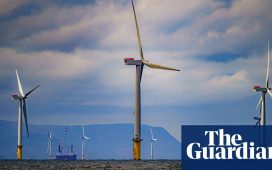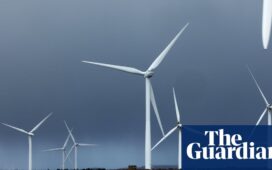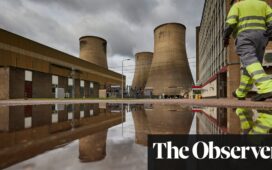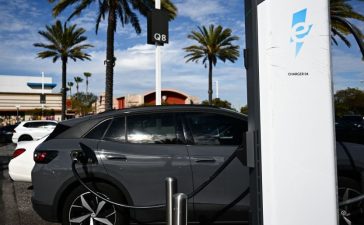On a sodden, frost-covered morning in Widnes, Cheshire, hundreds of people stood outside the Eight Towers pub waiting for someone to push a detonator switch. In front of them soared the Fiddler’s Ferry coal fired power station and four massive cooling towers — now loaded with explosives and ready to be blown apart.
Grace Taylor, who had won the privilege of pushing the big red button in a charity raffle, stood in the fog with a crew of demolition workers. Town residents assembled on the banks of the River Mersey, perched on a viewing platform at a nearby science museum and climbed to the snow-covered Halton Castle to watch the explosion of the towers which have loomed over them for more than 50 years.
The destruction of the former power plant earlier this month will reshape the landscape of the area. “I think a lot of people are quite emotionally connected to it. There’s quite mixed feelings,” Taylor tells me. This sort of redevelopment project is hailed enthusiastically by politicians championing the shift to a net zero economy. But for communities that are reckoning with the industrial heritage of fossil fuels, it is a complicated transition.
Redcar, Port Talbot and Scunthorpe, three historic steel towns, are all grappling with the uncertain future of green steel production. Coal-fired power plants including Ferrybridge, West Yorkshire, Cottam, Nottinghamshire, and Longannet, in Fife, have all been levelled in recent years.

Fiddler’s Ferry was decommissioned in 2020 following the UK government’s decision to move away from coal. The razing of four of its eight towers is the first phase of the project, and another blast is scheduled for next year. The redevelopment of the site is expected to yield 860 new energy efficient homes, 101 hectares for industrial development with an associated jobs boost, a new primary school, a health centre and a battery storage facility needed for the expansion of wind and solar energy.
A landmark of the industrial North West, Fiddler’s Ferry became operational in the early 1970s, providing jobs and a sense of identity for what could otherwise have been just another Mersey way station. As unsightly as it may seem to outsiders, there was an undeniable cultural significance to the site. The towers were visible on the flight into Liverpool airport and from the Pennines; they featured in the opening to the sitcom Two Pints of Lager and a Packet of Crisps, and were the backdrop to a legendary Stone Roses concert that took place in 1990.
Dan Brown, a young architect who grew up in Widnes and lodged an application with Historic England to save the towers from destruction, was among the crowd watching the demolition. While Brown told me he wasn’t expecting the campaign to succeed, he fears the town is forfeiting its heritage. “It’s a monument to an industry which is beginning to die away. It’s potentially a whole typology of architecture that will disappear within our lifetimes.”
The successful repurposing of industrial sites is possible. Coal-fired power plants have the advantage of being connected to existing energy infrastructure, making them easier to convert. In Stoke-on-Trent, ageing potteries have been remodelled and restored. Germany’s sprawling Emscher Landscape Park has transformed declining factories into museums, housing, and ecological sites along reclaimed waterways. But this all requires considerable investment.
Back in Widnes, the attendant gave a five-minute warning and the blast started with a few gentle explosions, a short pause and then a shockwave that hit deep in the chest. Car alarms erupted into a symphony as the towers buckled and melted into the fog. It took nearly a quarter of an hour for the flecks of white dust and the sulphurous firework smoke to settle through the town; some onlookers cried, others cheered.
The demolition left me wondering about the future relics of the fossil fuel industry — coal mines, offshore oil platforms, even petrol stations. If governments are serious about pursuing a transition to a greener economy, they need to offer communities like Widnes something to hold on to.
Later that evening, I called Taylor to see how she was feeling. “The skyline looks different now. Four of the towers are gone — it’s just a bit strange.”











